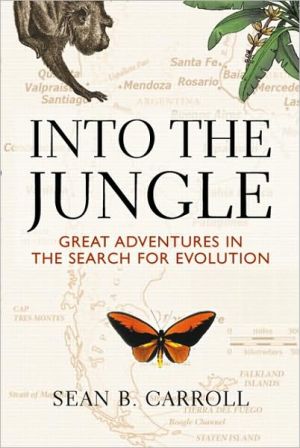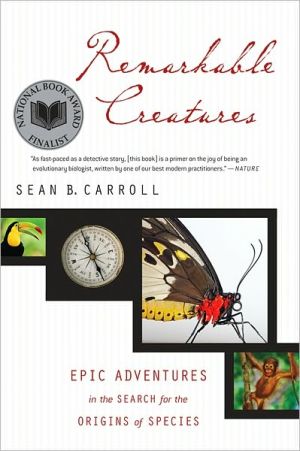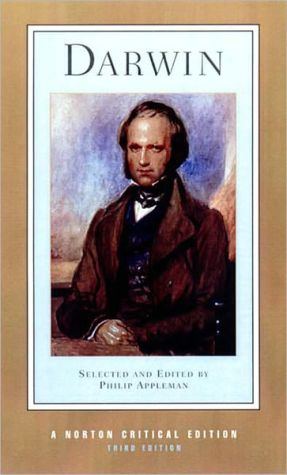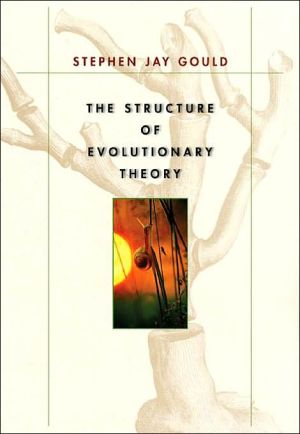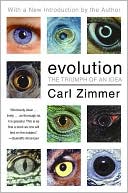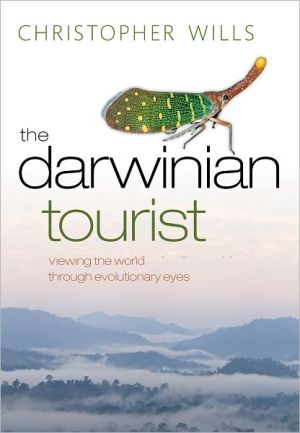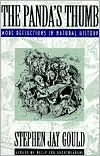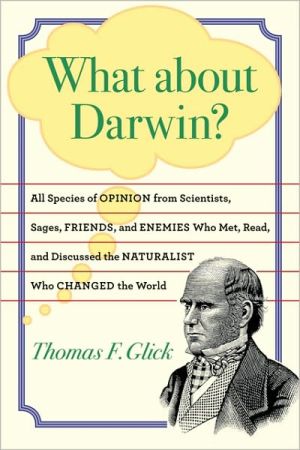The Discovery of Evolution
Originally published in 2007, The Discovery of Evolution explains what the theory of evolution is all about by providing a historical narrative of discovery. Some of the major puzzles that confront anyone studying living things are discussed and it details how these were solved from an evolutionary perspective. Beginning with the emergence of the early naturalists in the seventeenth century, the scientific discoveries that led up to and then flowed from Darwin and Wallace's theory of...
Search in google:
A compelling journey of discovery uncovering some of the mysteries of evolution.
\ Cambridge University Press\ 978-0-521-86803-7 - The Discovery of Evolution - by David Young\ Excerpt\ \ INTRODUCTION\ \ \ \ I invite you to accompany me on a journey of adventure and discovery. What I offer you here is a journey for the mind and adventure in the realm of ideas. In the following chapters, we shall go back in time and retrace the steps of the scientists who developed the theory of biological evolution. We shall follow the thoughts of those who first made discoveries relevant to the theory and those who grappled with evolutionary ideas when they were new. This will enable us to see what led scientists to accept that the Earth was far older than previously thought, to prefer evolution to special creation and to grasp the nature and importance of natural selection.\ No one need hesitate to set out on this journey on the grounds that they know little about biology in general or evolution in particular, for our journey begins in the seventeenth century, when even the most accomplished naturalists knew next to nothing about biology as we understand it today. By the seventeenth century, the rebirth of learning in Europe had kindled a renewed curiosity about the natural world of animals, plants, minerals and rocks. The naturalists of the time carried out their work with great enthusiasm but with only the simplest of scientific backgrounds to guide them.\ As we shall see, their steadily increasing knowledge brought naturalists of the seventeenth and eighteenth centuries up against some of the fundamental problemsof biology. One thing that they encountered was the great diversity of animals and plants found across the world. Another was the occurrence of fossils embedded in the rocks, a discovery that opened up the history of life. Comparative anatomical study began to reveal the detailed organization by which animals and plants are adapted to their particular way of life. Dealing with this expanding field of knowledge required new ideas and methods, and these developments led to the origin of biology and geology as professional fields of study.\ The terms 'biology' and 'geology' came into use at the beginning of the nineteenth century, which was a vitally important period for the development of evolutionary theory. The quickening pace of research early in the century began to uncover much new evidence and, in the middle of the century, Charles Darwin and Alfred Wallace incorporated this evidence in a comprehensive theory of evolution. This theory was promptly taken up by men like Thomas Huxley and was soon accepted into biology and geology at large. By the end of the century, it was clear that Darwin and Wallace had brought about a permanent advance in our understanding of the living world.\ The nineteenth century is thus the high point of our journey, and fortunately it is an accessible and fascinating period. People jotted down their thoughts in notebooks and shared their thoughts by letter in those days before the advent of telephones or email. These notebooks and letters were often carefully preserved and, for a number of famous scientists, they have been published in book form. Many of these are still readily available, along with the regular books and articles written by these people. So, to this day, I have on my shelf more books by Darwin, Huxley and Wallace than books about them.\ Our journey then moves on to the twentieth century, where biology becomes steadily more diversified and specialized. Consequently, it is not possible to take as close a view as we obtained of the pivotal episodes in the nineteenth century. We shall instead take a path that picks out some of the crucial developments in the study of inheritance, of populations and of fossils, which have progressively refined the theory of evolution. As in any healthy field of science, these developments generated a stimulating mix of confusion and clarification, controversy and synthesis. But they also confirmed and strengthened evolutionary theory, establishing it as a crucial ingredient of modern biology.\ The outcome of taking this path through the twentieth century will be to link up with studies of evolution being carried out today. Our journey will thus acquire a special interest for those who already know some biology. For the biologists at work today are pioneers on the same journey, cutting fresh trails on the same quest as earlier naturalists. The most modern research is not somehow isolated from that earlier work but is part of the progressive growth in our understanding of the living world.\ It is often wise to consult a traveller's guide before setting out on a journey. The benefit and enjoyment of a journey can be much enhanced if we know beforehand what the main points of interest are and what to avoid. In the present case, we can do much the same thing by pausing to consider more closely the place that evolution occupies in modern science before passing to the seventeenth century. We shall be better prepared to embark once we understand clearly why evolution is such an exciting and important scientific concept.\ \ \ \ \ CHAPTER ONE\ \ \ \ EVOLUTION JOURNEY'S GUIDE\ Sherlock Holmes once remarked to Dr Watson that our ideas must be as broad as nature if they are to interpret nature. He made this remark with reference to some of Charles Darwin's ideas about evolution, and what a fitting comment it is! The theory of evolution is well calculated to broaden the ideas of any thoughtful person, for it seeks to unravel the thread that ties all living organisms together.\ It does this by suggesting that all animals and plants living on Earth today are the modified descendants of quite different animals and plants, which existed at earlier times. Such modification is possible because of inherited differences that occur between one generation and the next in all organisms. Evolution takes place when these differences build up in one direction over successive generations. Changes of this kind have apparently been going on for millions of years, and as a rule the later organisms have tended to be more complex and diversified than earlier ones. So evolution encompasses the idea that the animals and plants we see around us today are all descended from just a few simple forms of life that first arose on Earth.\ Evolution is a notable example of a far-reaching scientific theory. Concepts like this provide a means of understanding the natural world in which we live. Without their aid, we may gaze admiringly at some part of nature but we will not understand it. For instance, rooms in the stately homes of a bygone era are sometimes adorned by glass cabinets containing dead animals mounted for display. Often enough, these cabinets contain an assortment of birds and mammals, or else collected seashells and fossils mixed up together. In this situation, animals are treated as mere curiosities or objects pleasing to the eye, along with fine furniture and paintings. The mounted animals may be much admired, but some general theory is needed to explain them, if they are to be viewed with understanding.\ \ \ Image not available in HTML version\ \ \ Scientists do not adopt a particular theory just because it is an elegant idea. It must also provide a framework for solving difficulties that they encounter in their daily work, as they carry out research into the details of the natural world. Evolution has been adopted as a central theory in biology precisely because it enables us to solve a number of major puzzles that confront anyone who studies living things in any detail. The sorts of problem that crop up can be illustrated by any well-known group of animals or plants.\ Take kangaroos, for example. Everybody knows that kangaroos live in Australia. Their form is now so familiar that a kangaroo motif adorns all manner of things Australian, from postcards to airliners. However, this very familiarity tends to make us forget what unusual animals these are. There is nothing quite like them anywhere else in the world. In fact, the first European naturalists to visit Australia were so astonished by the appearance of kangaroos that they had difficulty in drawing them correctly (see colour plate 1A).\ The most distinctive feature of kangaroos is their powerful hindlimbs and long feet, which are used in a fast hopping gait. Their forelimbs are much smaller and do not touch the ground, except when the animals are at rest or moving slowly. No other large mammals use this kind of hopping movement. Another notable characteristic of kangaroos is that their young are born at an early stage, while they are still tiny, and are then nourished externally in a pouch. This pattern of reproduction is shared by a large group of mammals, the marsupials, which include koalas, possums and wombats. The marsupials are found mainly, but not exclusively, in Australia.\ Kangaroos come in a variety of shapes and sizes. As a first step in studying such variety, biologists classify animals and plants into groups of similar forms. The basic unit of classification is the species. A species consists of individuals that resemble each other closely, except for differences due to age and sex, and differ consistently from individuals belonging to all other species. Species that are similar to one another are grouped together in higher categories, starting with the genus.\ Taken together, typical kangaroos and their close relatives have been classified into more than fifty different species. These include a wide variety of animals with the same basic body plan, ranging in size from the small and distinctive rat-kangaroo to the large red kangaroo. There are also marked differences in their geographical distribution, with some species being widely distributed across the continent and others being confined to surprisingly small areas. But whether their geographical range is large or small, all these species are found on the Australian mainland or on nearby islands.\ For anyone who wants to understand the living world, this information raises questions about the diversity of animals and their distribution across the world. Why, for example, are these species quite varied, and yet are all recognizable as species of kangaroo? Why do they show this pattern of unity amid the diversity? And why are they all confined to the Australian region?\ Satisfactory answers to these questions are readily worked out in terms of evolution. For evolution makes sense of the fact that a large number of species, which share the same unusual body plan, are all found in the same part of the world. Such a pattern is to be expected if all these species are the modified descendants of some early marsupial mammals that had something like that basic body plan. That this whole range of species is confined to the Australian region is accounted for by the isolation of this island continent, which effectively inhibits migration by most mammals.\ Another question here is: why do some kangaroos live in trees? Typical kangaroos are well adapted to bounding across the open plains, but a few species are at least partly adapted to living in trees. These are the tree kangaroos, which inhabit the tropical forests of New Guinea and the far north of Australia. The fact that each species of animal or plant is adapted to its way of life within a particular habitat raises as many questions as the diversity of species. Tree kangaroos illustrate this point beautifully.\ Tree kangaroos are adapted to clambering about in trees by a number of obvious features (see colour plate 1B). They have forelimbs that are relatively longer and more muscular than those of typical kangaroos and these are used for hanging on to tree trunks and branches. All four feet bear long curved claws and have granular soles, which improve their grip. The tail is particularly long to aid in balancing. In addition, most species of tree kangaroo can move their hindlimbs alternately, enabling them to walk and run in trees rather than being limited to hopping, as are the ground-dwelling species.\ So how come these animals are adapted to living in trees? The theory of evolution suggests that tree kangaroos are just what they seem to be: kangaroos that have become modified in certain features to fit them for life in the trees. That is to say, the process of evolutionary change is a process in which some pre-existing structures are modified to suit a new or changing environment. A strong indication that tree kangaroos really are descended from ground-dwelling kangaroos is provided by the way their feet are adapted to life in the trees.\ One striking feature of the possums, which dwell in trees, is that the hind foot has a mobile big toe. This is offset from the other digits and so enables the animal to grasp the branch of a tree securely. In contrast, the ground-dwelling kangaroos lack the big toe entirely, and the next two digits are quite small. This loss or reduction of the lateral digits is an adaptation for speed over the ground, and is also found in other fast-moving mammals.\ Now, in the tree kangaroos, the hind foot resembles that of other kangaroos in lacking a big toe and in having much reduced second and third digits. Useful though a grasping big toe would be, they do not\ \ \ Image not available in HTML version\ \ \ possess one. Instead they obtain a grip on tree branches by means of the granular sole, which wraps round the side of the foot, and the curved claws. That this adaptation has been produced by modifying a pre-existing structure is clear because the adaptation is far from perfect. It has a makeshift quality about it, which makes it easy to see evolution at work.\ This raises the further question of what kangaroos are doing in trees in the first place. On the island of Borneo, which is no great distance away and not very different in climate from New Guinea, there are apes and monkeys in the trees. In fact, from Borneo westwards, placental mammals dominate the scene, while east of Borneo marsupial mammals predominate. The absence of placental mammals, including apes and monkeys, from Australia and New Guinea is probably due to the isolation of these large islands. Consequently, there was an opportunity for living in the forests of tropical Australia and New Guinea, which could be exploited by the modified descendants of ground-dwelling kangaroos.\ Whether Australia and New Guinea really have been separated from South East Asia for many millions of years as this theory requires is a matter of geology. It is the business of geology to reconstruct past changes in the structure of the planet by examining traces left in the rocks. Evidence derived from deep-sea drilling shows that the sea floor is continually spreading, with the result that the continents change their positions over geological time. From this, it appears that Australia and New Guinea, which lie on the same continental plate, were even more isolated in the past than they are now.\ Kangaroos, then, are just one example of how puzzles about the adaptation and diversity of species can be resolved by the theory of evolution. If some early marsupials became isolated in Australia and subsequently evolved into a variety of species as opportunity arose, then this would explain why a whole range of kangaroos, including the remarkable tree kangaroos, are found only in Australia and its immediate neighbourhood. Furthermore, this conclusion dovetails well with the conclusions that geologists have reached concerning the movements of the continents in the remote past.\ Of course, evolution would hardly be a matter of great interest if it applied only to some fifty species of kangaroo. However, it has been found to make sense of the situation time and again when animals and plants have been studied in detail. Many different branches of biology have combined to tell the same story, as the following chapters will show. It is therefore logical to regard evolution as a principle that applies generally to all living organisms. This being the case, the theory of evolution becomes one of the most important and illuminating contributions not only to biology but also to the whole of natural science.\ In throwing light on the diversity and adaptations of living things, the theory of evolution can be seen to address two fundamental aspects of biology. This is reflected in the theory having two parts, though the distinction between them can never be absolute. One part of the theory deals with what has happened in the history of life on this planet, and the other part deals with how it has happened. The first part, then, is concerned\ \ \ Image not available in HTML version\ \ \ with evolution as history. The theory seeks to explain the diversity of animals and plants by providing an accurate account of changes in the history of life that have given rise to this diversity. Inferences about what must have occurred in the past are based on a consistent pattern of evidence from various sources in the present.\ The second part of the theory deals with evolution as a mechanism of change that produces well-adapted organisms. Here the theory seeks to explain how evolution occurs as a consequence of everyday processes in living things. Ideas about the mechanism of evolution are derived from evidence of processes at work in natural populations at the present time. The best known idea for explaining how adaptation is produced by evolutionary change is that of natural selection, first proposed by Charles Darwin and Alfred Wallace.\ \ © Cambridge University Press
Introduction 1Evolution - journey's guide 4Puzzles for the naturalist 20Matters of place and time 47A natural history of creation 76The species question 102Life's genealogy and natural selection 130A rich inheritance 157Synthesis and species 183The continuing journey 210Evolution: truth, theory or myth? 235Evolutionary reading 249Evolutionary Who's Who 251Bibliography 258Illustration Sources 269Index 279
\ From the PublisherReview of the hardback: 'Young's lavishly-illustrated, well-designed, and clearly-written account of evolution deserves wide general readership, and provides a coherent panorama for students.' Journal of Biological Education\ Review of the hardback: 'I recommend this fascinating and well-written book, which will be enjoyed by anyone with an interest in the natural world.' IBIS\ Review of the hardback: 'Young's The Discovery of Evolution leads the reader into the deep history of evolutionary ideas, from the 17th century through Darwinism, tracking the contributions of geology, natural history, classification, and genetics along the way. It provides students with a rich background to appreciate contemporary biological ideas and disputes in an accessible and beautifully illustrated book.' Sandra D. Mitchell, Professor and Chair, Department of History and Philosophy of Science, University of Pittsburgh\ Review of the hardback: 'The Discovery of Evolution is a superbly accessible, reliable and visually appealing introduction to the history of evolutionary theory. Covering the advances in geology, natural history and palaeontology in the decades before Darwin discovered the principle of natural selection in late 1838, it also examines the obstacles to evolutionist thought in the 1800s, the empirical observations that led Darwin and Wallace to their historic insights, and the brilliant scientific work of the twentieth century that demonstrated the validity of Darwin's evolutionary theory. The book is well-written and presented, but perhaps its chief merit is the sheer quality and quantity of the images which make the ideas it explains so much more comprehensible and the story told richly evocative.' John C. Waller, Department of History and Philosophy of Science, University of Melbourne\ Review of the hardback: 'Reading the history of evolutionary biology is one of the best ways to understand what evolution is and what it means for understanding our place in the world. The Discovery of Evolution, beautifully illustrated with contemporary pictures and documents, shows how the theory of evolution provided a single, elegant and convincing answer to a myriad of biological questions. Taking the reader from Aristotle to Darwin to Hamilton and beyond, this book is an accessible introduction to the development of evolutionary biology, and should be read by anyone interested in how this revolutionary idea changed the way we think about the world around us.' Lindell Bromham, School of Botany and Zoology, Australian National University\ 'It is written by a talented specialist from Australia, who tells amazing stories about evolutionary developments in the natural sciences. … Young is [an] inspired writer who [has given] us an outstanding possibility to learn the history of … evolutionary knowledge and to feel those incredible efforts applied to obtain its framework … Reading this book will be a great pleasure for every specialist in the bio- and geosciences as well as for all amateurs …' Phylogenie und Evolution\ \ \

